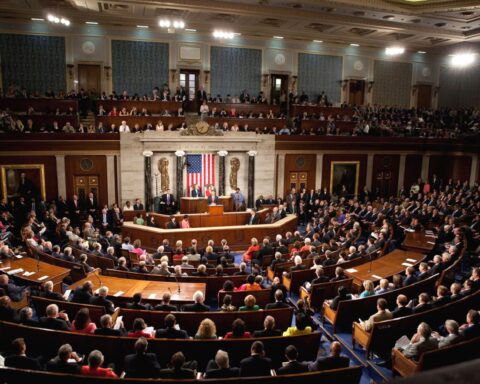Bitcoin’s blistering rally to record highs paused just shy of the $110,000 milestone on May 26, yet institutional demand continued to swell in the background, cushioning any immediate downside pressure.
The flagship cryptocurrency dipped after momentum faded during Asia-Pacific trading, lingering near $108,500 as traders weighed looming United States inflation data and the imminent earnings release from chipmaker Nvidia.
Market watchers attributed the hesitation in part to President Donald Trump’s decision to delay retaliatory European Union tariffs until July 9, a move that eased equity jitters but left macro uncertainty hanging over risk assets.
Even so, derivatives desks reported a steady uptick in the Bitcoin two-month futures premium, which climbed from 6.5% to 8% in twenty-four hours, signaling that sophisticated traders were confidently rebuilding long exposure rather than capitulating.
Institutional appetite offsets price lull
Evidence of that confidence was nowhere clearer than in spot Bitcoin exchange-traded funds, which attracted $2.75 billion of net inflows between May 19 and May 25, according to preliminary custodial data.
Wall Street giants appear increasingly comfortable marketing those vehicles to core clients; JPMorgan chief executive Jamie Dimon told investors the bank would “finally allow clients” to purchase the products, creating a new pathway for its $6 trillion deposit base to gain indirect crypto exposure.
MicroStrategy founder Michael Saylor underlined the theme by revealing a fresh $427 million Bitcoin acquisition at an average price of $106,237, lifting the business-intelligence firm’s holdings to more than 239,000 BTC.
Options data delivered a complementary bullish signal: the 30-day put-call delta skew turned negative 6%, implying traders were paying a premium for upside hedges while pricing limited probability of a violent sell-off.
Macro cross-currents in focus
For now, analysts caution that headline economic releases could dictate the next directional break.
The Richmond Fed manufacturing index is due on May 28, followed two days later by the Fed’s preferred inflation gauge, the PCE price index, and a hotter-than-forecast print could rekindle concerns about higher-for-longer interest rates.
Nvidia’s earnings, expected after the closing bell on May 28, represent another wildcard; a disappointing read-through on artificial-intelligence hardware demand could sap risk appetite across equities and spill into crypto.
Nevertheless, bulls argue that Bitcoin’s structural bid, driven by ETFs and treasury strategies, should limit any retracement toward $105,000, the level that marked last week’s low.
Path to new highs
Bitcoin remains just 2.6% below its all-time high of $111,957, and several desks believe a decisive break above $112,000 could trigger systematic short covering and ignite a fresh leg toward the psychologically potent $120,000 handle.
Skeptics counter that rising U.S. government debt worries and a softer housing market, highlighted by a 5.1% weekly drop in mortgage applications, might cap enthusiasm until clearer evidence emerges that the economy can navigate tight monetary conditions.
With U.S. markets closed for the Memorial Day holiday, liquidity is expected to thin, raising the likelihood of abrupt moves driven by a handful of large orders on offshore exchanges.
Until then, traders are parsing every macro headline while keeping one eye on the persistent wall of institutional money waiting for dips—money that, so far, has proven more than willing to “gobble up” available supply.




